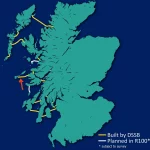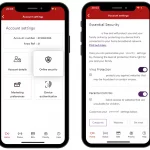Average Cost Per Mbps of UK Fixed Broadband Speed is $0.34 vs $0.85 Globally
Telecoms analyst Point Topic has revealed that residential consumers in the United Kingdom pay an average of $0.34 (USD PPP) per Mbps (Megabit) of fixed line broadband bandwidth, which compares with a global average of $0.85 and just $0.05 in the cheapest country of Singapore.
The figures are based on a calculation that factors in each country’s average advertised download speeds and what packages are available, which of course won’t reflect other complicated factors like actual network availability or real-world performance (i.e. take the data with a pinch of salt, particularly since ultrafast FTTH and Cable packages will make some countries look better than they actually are).
On top of that the costs are balanced by Purchasing Power Parity (PPP), which allows the analyst to make direct comparisons of tariffs across the world by adjusting the local currency and exchange rate to make the buying power of $1 (PPP) in country A equal to $1 (PPP) in country B (note:£1 = $1.29 at today’s rate).
Advertisement
In Q1 2017, the global average monthly charge for residential broadband services was $105 (£81), up from $98 (£76) in Q4 2016. Apparently prices have risen for all three of the main broadband technologies (copper, cable and fibre), which is partly to do with rising service speeds and data usage (e.g. the average bandwidth provided to residential subscribers is now 124Mbps [165Mbps in the UK], up from 118Mbps in Q4 2016).
Regional Summary
Asia-Pacific retained its dominant position in terms of bandwidth as the operators in the region continue to push FTTP services. In Q1 2017, the average bandwidth in this region was 405Mbps. Western Europe followed as it pushed VDSL and, since recently, G.fast. The region saw its average bandwidth grow from 161Mbps in Q4 2016 to 164Mbps in Q1 2017, and it offered the best value for money in terms of average monthly broadband tariff, having overtaken Asia-Pacific this quarter.
In Q1 2017, North America saw its average bandwidth go up further by 8% compared to the previous quarter as Canadian and US operators upgraded their speeds and expanded FTTP and superfast cable networks. South and East Asia also saw the average download speeds increase by 10% q-o-q. Countries of Middle East and Africa continued to be the most expensive broadband markets, not least due to the lack of competition in the fixed broadband markets and fixed broadband being strongly overshadowed by mobile.
We should point out that the United Kingdom is ranked 19th for average advertised download speeds (165Mbps), which as we stated earlier is not very reflective of the real-world environment (i.e. around half of premises are not yet able to access even close to such speeds).
At present Virgin Media’s 300Mbps cable network can cover nearly half of the UK and Openreach’s (BT) FTTC can reach 92% of premises (estimated) with speeds faster than 24Mbps+, although many of those only covered by FTTC will struggle to even get close to the technology’s top speed of 80Mbps.

Advertisement
Elsewhere the average ‘global’ cost per Mbps (for all three technologies of copper, fibre and cable combined) was $0.85 (£0.66) at the end of Q1 2017, which is largely unchanged from $0.83 (£0.64) at the end of Q4 2016.
Unsurprisingly you get more bang Megabits for your buck from Fibre Optic (FTTP/H) and Cable (HFC DOCSIS) technologies than slower copper (ADSL etc.) services.

Point Topic’s website has an interesting country ranking for residential broadband tariffs (here), although sadly they haven’t published a detailed breakdown for the United Kingdom.
Advertisement
Mark is a professional technology writer, IT consultant and computer engineer from Dorset (England), he also founded ISPreview in 1999 and enjoys analysing the latest telecoms and broadband developments. Find me on X (Twitter), Mastodon, Facebook, BlueSky, Threads.net and Linkedin.
« Former Easynet Chief Appointed as New CTO for UK ISP Zen Internet

















































Comments are closed